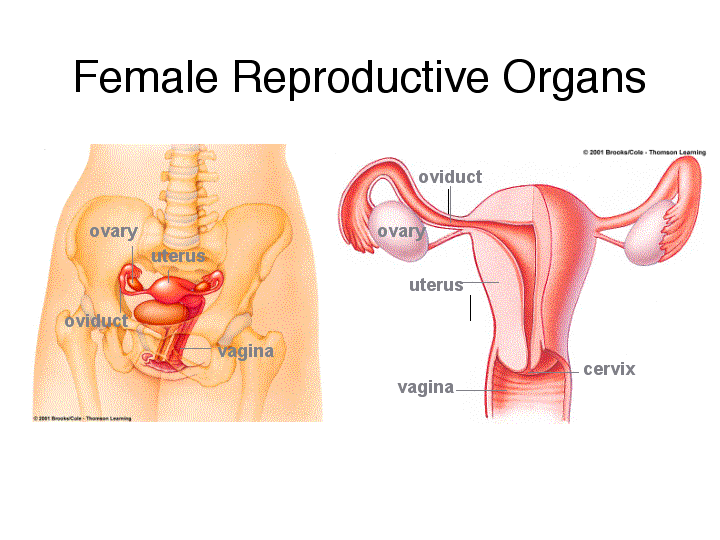

Ovaries are paired structures in the lower portion of the abdominal cavity. Through meiosis, ovaries produce eggs in cavities within the ovary called follicles. During ovulation, the eggs leave the follicle and are ejected into the upper end of the oviduct. At the time of her birth, all the eggs that a female will ovulate during her lifetime are already present in the ovaries. These eggs develop and ovulate at a rate of one every 28 days (approximately), starting at puberty.
This animation (Audio - Important) describes the female reproductive system.
The ovaries also produce female sex hormones such as estrogen. Like male sex hormones, the female sex hormones regulate the secondary sexual characteristics of the female, including the development of the mammary (milk) glands and wider hip bones (pelvis). They also play an important role in the menstrual cycle, which involves the interaction of the pituitary gland, ovaries, and uterus.
There are four stages in the menstrual cycle:
Ovulation - The mature egg is released from the follicle as estrogen instructs the pituitary to inhibit FSH (through a feedback mechanism) and, at the same time, to release LH (lutenizing hormone). A spike in LH is the key to induce ovulation. Constant high levels of estrogen block the LH surge and block ovulation. This is the mechanism by which the birth control pill acts.
Corpus Luteum Stage - The corpus luteum forms from the ruptured follicle. Lutenizing hormone from the pituitary stimulates the corpus luteum to produce progesterone and estrogen, which stimulates vascularization (growth of blood vessels) and lining formation of the uterus in preparation for implantation of the fertilized egg. This stage lasts 12 to 15 days.
Menstruation - If no fertilization or implantation has occurred, the increased estrogen and progesterone block LH production. Without LH, the corpus luteum atrophies, reducing progesterone levels. Without progesterone, the thickened, spongy uterine wall that had been prepared for implantation breaks down. The degenerating tissue, blood, and unfertilized egg are passed out as menstrual flow. This stage lasts approximately four days, bringing the total to 28 days for the entire cycle.
If fertilization occurs, the developing placenta produces HCG (human chorionic gonadotrophic), which acts to maintain the corpus luteum. Progesterone further ensures that the uterine wall is thickened so that embryonic development can occur and pregnancy can continue. With time, the placenta develops and takes over the production of estrogen and progesterone.
These animations (Audio - Important) describe the menstrual cycle:
summary of cycle,
follicle development,
early events,
late events.
This animation (Audio - Important) describes female hormones.